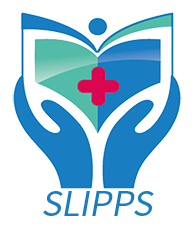24 Jan
2018
Mobile Apps for Patient Safety
Information & Communication Technologies (ICT) and Learning & Knowledge Technology (LKT) have brought a social revolution that has pushed to the health context towards a process of continuous innovation. Terms such as e-Health, m-Health, telenursing, telemedicine, Health-apps or even Dr Google are well known among health professionals around the worth (Vizcaya et al., 2017).
Mobile technology is gradually being introduced in the field of health care, by allowing communication (effective, asynchronous, etc.), making reference material or information more accessible, acquiring critical thinking skills and even improving patient safety (Casselman, et al., 2017; Roberts and Williams, 2017; Mira et al., 2016; O’Connor and Andrews, 2015; Pucer et al., 2014; Lee Ventola, 2014).
Thereby, SLIPPS group has wondered about the existence, characteristics and plausible uses of mobile apps for patient safety. We present below some of the most interesting ones that we have found.
· CheckAid has been designed for healthcare providers as an easy tool for implementing checklists, following the methodology used by the WHO for design the Safe Surgery Checklist. [https://itunes.apple.com/es/app/checkaid/id722613446?mt=8]
· iScrub Lite is an app designed by the University of Iowa to record hand hygiene observations. This app can be used to note observations with time, location and job role and transferring data by email. [https://itunes.apple.com/es/app/iscrub-lite/id329764570?mt=8].
· AirSignout is an iOS 7 app to decrease vulnerability and increase reliability to the physician sign out process, one of the most dangerous procedure in the practice of medicine (80% medical errors relating miscommunication during handoffs) [https://itunes.apple.com/es/app/airsignout/id714179957?mt=8]
· PatientTouch created by PatientSafe Solutions is an iOS app for healthcare professionals. A 12-site study found this app “reduced medical errors by 99 percent” [https://www.patientsafesolutions.com/news/patienttouch-named-top-15-health-it-app/]. The app includes: positive patient identification thorough barcode verification, allows users to communicate with the network of healthcare professionals, and carry and edit patient records at patient’s bedside [https://itunes.apple.com/us/app/patienttouch/id403637292?mt=8]
· SAMA (Safety Agenda Mobile App) is an iOS app for health managers which would help them to manage interventions in relation to patient safety matters. SAMA includes a set of 37 predefined tasks that are the responsibility of health managers (Mira et al., 2016). [https://itunes.apple.com/es/app/safety-agenda-mobile-app/id1008897674?l=en&mt=8]
· MyMedSchedule Plus: is a personal health coach in the patient’s pocket, reminding them to take their medicines and following their progress. MedActionPlan [https://medactionplan.com/patient-safety/]
Mobile technology industry is still novel and possibly unpredictable (Casselman et al., 2017). But popular and health wearable technology is growing with a continuous progression. It could be possible that we can use a set of apps for patient safety as a health worker, health manager, patient, or health teacher in the very near future.
References:
Casselman, J., Onopa, N., & Khansa, L. (2017). Wearable healthcare: Lessons from the past and a peek into the future. Telematics and Informatics, (2017). http://doi.org/10.1016/j.tele.2017.04.011
Mira, J. J., Carrillo, I., Fernandez, C., Vicente, M. A., & Guilabert, M. (2016). Design and Testing of the Safety Agenda Mobile App for Managing Health Care Managers’ Patient Safety Responsibilities. JMIR mHealth and uHealth, 4(4).
O’Connor, S., & Andrews, T. (2015). Mobile Technology and Its Use in Clinical Nursing Education: A Literature Review. Journal of Nursing Education, 54(3), 137–144. https://doi.org/10.3928/01484834-20150218-01
Pucer, P., Trobec, I., & Žvanut, B. (2014). An information communication technology based approach for the acquisition of critical thinking skills. Nurse Education Today, 34(6), 964–970. https://doi.org/10.1016/j.nedt.2014.01.011
Roberts, D., & Williams, A. (2017). The potential of mobile technology (#MoTech) to close the theory practice gap. Nurse Education Today, 53, 26–28. https://doi.org/10.1016/j.nedt.2017.03.003
Ventola, C. L. (2014). Mobile Devices and Apps for Health Care Professionals: Uses and Benefits. Pharmacy and Therapeutics, 39(5), 356–364.
Vizcaya-Moreno, M.F., Jiménez Ruiz, I.; Pérez Cañaveras, R.M., Hernández Ortuño, Corral Noguera, A., de Juan Pérez, A. TIC-TAC en el entorno de aprendizaje práctico. [ICT-LKT in the practical learning environment. Memories of the I3CE Networks Program of quality, innovation and research in university teaching.] Memorias del Programa de Redes-I3CE de calidad, innovación e investigación en docencia universitaria. Convocatoria 2016-17. pp. 2607 – 2617. Comunidad Valenciana (España): Instituto deCiencias de la Educación (ICE) de la Universidad de Alicante, 2017. In: <http://hdl.handle.net/10045/72112>
